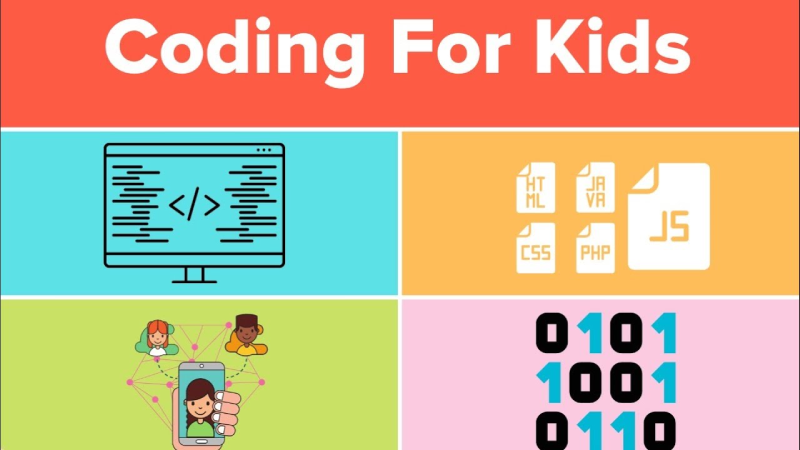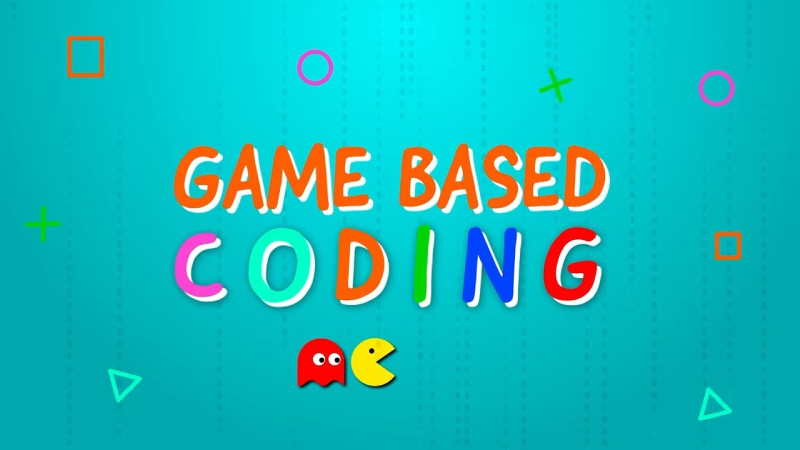Why Coding Matters for Kids Today
Let’s talk about why teaching your child to code is such a valuable experience. In our increasingly digital world, coding has become a fundamental skill – not just for future tech careers, but for developing critical thinking abilities that help in all areas of life. As a parent the question is, How Can I Teach My Child Coding?
When kids learn to code, they’re actually learning how to solve problems by breaking them down into smaller, manageable pieces. I’ve seen children who code regularly become more analytical in their approach to everyday challenges. Plus, there’s something incredibly empowering about creating something that actually works – whether it’s a simple game or an animated story.
Think about it this way: coding teaches your child that making mistakes is just part of the process. Every programmer, no matter how experienced, spends time debugging their code. This naturally builds resilience and a positive attitude toward learning from errors.

How Coding Shapes Young Minds
Building Those Thinking Skills
When your child codes, they’re exercising their brain in powerful ways. They learn to think logically and recognize patterns – skills that translate wonderfully to math, science, and even reading comprehension.
I remember working with a 9-year-old who struggled with math. After a few months of coding with Scratch, her teacher noticed she was approaching math problems differently – more methodically and with greater confidence. The sequential thinking required in coding had strengthened her ability to work through problems step by step.
Unleashing Creativity
One of the biggest misconceptions about coding is that it’s just technical and not creative. Nothing could be further from the truth! Coding is actually an incredibly creative outlet. Kids can design characters, build worlds, tell interactive stories, and create games limited only by their imagination.
Many parents tell me they’re surprised by how artistic coding can be. Your child might not show interest in traditional art forms, but give them a tool to create interactive animations, and suddenly they’re designing elaborate scenes and storylines.
Getting Ready for the Future
While we can’t predict exactly what jobs will exist when our kids grow up, we do know digital literacy will be crucial. Learning to code helps children understand the technology-driven world around them and gives them the confidence to engage with it actively rather than just consume it passively.
But it’s not just about technical skills. When kids work on coding projects together, they’re also developing communication skills, learning to collaborate, and practicing how to explain their thinking clearly – soft skills that are valuable in any future career path.
What Works at Different Ages
For the Little Ones (Ages 4-7)
With young children, keep coding playful and hands-on. You don’t even need a computer to start teaching coding concepts!
Try playing “human robot” games where you give each other precise instructions to complete simple tasks. It’s hilarious when you find out your instructions weren’t specific enough! This teaches the precise thinking needed for programming.
When you’re ready to introduce tech tools, apps like ScratchJr or Kodable are perfect. They use colorful characters and simple picture-based blocks that kids can drag and drop to create sequences. My neighbor’s 5-year-old loves making her cat character dance across the screen using ScratchJr – she doesn’t even realize she’s learning coding logic!
For Elementary Kids (Ages 8-11)
Once kids can read confidently, they’re ready for platforms like Scratch, created by MIT. It uses colorful blocks that snap together like puzzle pieces, eliminating the frustration of syntax errors while still teaching real programming concepts.
The key at this age is connecting coding to their interests. Does your child love space? Help them create an interactive solar system. Are they obsessed with dinosaurs? They could program a dinosaur quiz game. My son was soccer-fan, so we built a simple penalty shootout game – he was so motivated to make it work that he gladly tackled concepts that might otherwise have seemed challenging.
For Tweens and Teens (Ages 12+)
As kids get older, they can transition to text-based languages. Python is a great place to start because its syntax is relatively straightforward and it’s used in everything from web development to artificial intelligence.
For teens, real-world projects make coding meaningful. My friend’s daughter wanted to track her volleyball team’s statistics, so she learned enough Python to create a simple program that recorded and analyzed game data. The project kept her engaged because it solved an actual problem she cared about.
Creating a Supportive Coding Environment at Home
Finding the Right Rhythm
Consistency helps with learning coding, but it shouldn’t feel like a chore. Maybe it’s 30 minutes after dinner three times a week, or perhaps it’s part of weekend family time. The important thing is keeping it regular enough that concepts aren’t forgotten between sessions.
Be flexible, though. Some days, your child might be bursting with ideas and want to code for hours. Other days, they might need a break. That’s perfectly normal! Forcing coding when they’re not in the mood can backfire by creating negative associations.
Learning Together
Here’s a secret: you don’t need to be a coding expert to help your child learn. In fact, learning alongside them can be incredibly powerful. When you say, “I’m not sure how to do this – let’s figure it out together,” you’re modeling problem-solving in action.
When your child gets stuck (and they will – all programmers do!), resist rushing to provide solutions. Instead, ask questions like “What are you trying to make happen?” or “What have you tried so far?” These questions help them develop their own debugging skills.
Celebrating Small Wins
Coding can be frustrating sometimes. A small typo can prevent an entire program from working! Help your child see these moments as part of the learning process. When they finally fix a bug they’ve been battling, that’s cause for celebration!
One family I know keeps a “coding wins” journal where their kids draw or write about their projects and breakthroughs. It’s a wonderful record of progress that kids can look back on when they’re feeling discouraged.

Finding Resources That Work For Your Family
Apps and Websites Worth Checking Out
There are so many coding resources available that it can feel overwhelming. Here are some that consistently get positive feedback from families:
- Scratch (free): Perfect for elementary and middle school kids. It has a huge library of projects that kids can remix and a supportive community.
- Code.org (free): Offers structured courses with familiar themes like Minecraft and Star Wars. Their Hour of Code activities are great for beginners.
- Tynker (subscription): Provides a comprehensive curriculum with guided courses and creative tools. Many kids love their game-based approach.
- Khan Academy (free): Has excellent JavaScript and HTML/CSS courses for older beginners. Their step-by-step videos are very clear.
The best resource really depends on your child’s learning style and interests. Many platforms offer free trials, so you can explore together and see what clicks.
Looking Beyond the Screen
Don’t forget about in-person opportunities! Many libraries run code clubs, and schools increasingly offer coding as an extracurricular activity. Summer coding camps – both virtual and in-person – provide immersive experiences that can really accelerate learning.
These group settings add a social dimension to coding that many kids love. There’s something special about working through challenges together and showcasing your creations to peers who understand and appreciate what you’ve accomplished.
Creating a Learning Path That Grows With Your Child
Rather than sticking with just one resource, consider how your child’s coding journey might evolve over time. They might start with simple drag-and-drop tools, progress to block-based programming, and eventually transition to text-based languages.
Pay attention to when your child seems ready for new challenges. If they’re easily completing projects in their current platform and asking for more, it might be time to introduce something more advanced. Conversely, if they’re getting repeatedly frustrated, it’s okay to step back to something more accessible temporarily.
Connecting Coding to Kids’ Passions
For the Storytellers
If your child loves stories, show them how coding can bring their narratives to life. In Scratch, they can create interactive adventures where readers make choices that affect the outcome. My friend’s daughter coded an interactive retelling of her favorite fairy tale with multiple endings – combining her love of creative writing with new technical skills.
For younger children, even simple animation projects let them see their characters move and interact. It’s like creating their own mini movies!
For the Artists
Artistic kids often get hooked on coding through creating digital art. Programs like Processing or p5.js let them write simple code that generates amazing patterns and interactive visuals.
I’ve seen incredible digital art created by kids with just a few lines of code – spiraling geometric patterns, interactive color-changing landscapes, and animated characters. The immediate visual feedback is especially engaging for kids who think visually.
For the Music Lovers
Did you know coding and music have deep connections? Tools like Sonic Pi let kids create music through code, teaching both programming concepts and music composition simultaneously.
A teenager I worked with created a program that generated chord progressions for his band practice. He was learning about loops and variables while also deepening his understanding of music theory – a perfect combination of his interests.
Handling Common Challenges
The Screen Time Balancing Act
Many parents worry about adding more screen time to their children’s lives. It’s a valid concern! Here’s how you might balance it:
Mix screen-based coding with unplugged activities that teach the same concepts. For example, write “algorithms” for making a sandwich before programming similar instructions in a computer.
Remember that not all screen time is equal. When your child is actively creating through coding – solving problems and expressing ideas – it’s fundamentally different from passively consuming content.
When possible, incorporate physical computing. Projects with Makey Makey, micro:bit, or simple robotics connect digital coding with real-world objects, creating a more holistic experience.
When the Going Gets Tough
Every child will eventually hit concepts that feel challenging. When motivation wanes:
Take a temporary step back to more accessible projects. Success rebuilds confidence! After a positive experience, those challenging concepts often seem more approachable.
Make it relevant. Abstract concepts like variables make more sense when they’re tracking the score in a game your child is creating than when they’re just presented theoretically.
Use analogies from everyday life. I explain functions by comparing them to recipes – they’re a set of instructions you can use over and over again. These connections make programming concepts more concrete.
Making Coding Inclusive
We want all kids to feel that coding is for them, regardless of gender or background. Here are some simple approaches:
Share stories about diverse programmers who are creating amazing things. Organizations like Black Girls Code and AI4ALL have great resources featuring programmers from various backgrounds.
Choose inclusive learning materials that represent diversity in their examples and projects. This helps all children see themselves reflected in the world of technology.
Connect with community programs that focus on inclusion in tech. Many organizations offer specialized coding clubs, mentorship opportunities, and events specifically designed to encourage underrepresented groups in technology.

Taking It Further When They’re Ready
Moving to Professional Tools
As your child becomes more experienced, they might outgrow educational platforms. Introducing tools like Visual Studio Code (for various languages) or PyCharm (for Python) gives them experience with the same environments used by professional developers.
This transition can be challenging but rewarding. These tools offer powerful features that enable more sophisticated projects, though they do have steeper learning curves than educational platforms.
Exploring Specialized Areas
Once they have solid foundations, kids often enjoy diving into specialized areas:
- Game development using engines like Unity or Godot lets them create more complex games with physics, multiple levels, and customized characters.
- Data visualization through Python libraries teaches them to analyze and present information graphically – great for kids interested in science or social issues.
- Physical computing with Arduino or Raspberry Pi connects programming with electronics, allowing them to build interactive devices that respond to the world around them.
These specialized paths let kids apply coding to areas they’re passionate about, making the learning deeply personal and meaningful.
Joining Coding Communities
For kids who develop a serious interest in coding, connecting with wider communities opens new doors. Sites like GitHub host repositories where programmers collaborate on projects. Many have sections specifically welcoming new contributors.
My teenage neighbor contributes to an open-source project that develops accessible games for children with disabilities. She’s learning professional development practices while working on something she cares deeply about – a powerful combination.
Keeping Track of Progress
Instead of formal assessments, consider creating a digital portfolio of your child’s coding projects. This collection becomes a wonderful record of their growth over time.
Occasionally revisiting early projects can be incredibly affirming. Your child might say, “I can’t believe I thought this was hard!” or “Look how much better I could make this now!” These moments of reflection help them recognize their own progress and build confidence for tackling new challenges.
Remember that learning to code is a journey, not a race. Some concepts will click immediately, while others might take multiple attempts over time. The goal isn’t perfection but progress – building skills, confidence, and a positive relationship with technology that will serve them well throughout their lives.
What aspect of teaching coding to your child would you like to explore further?
